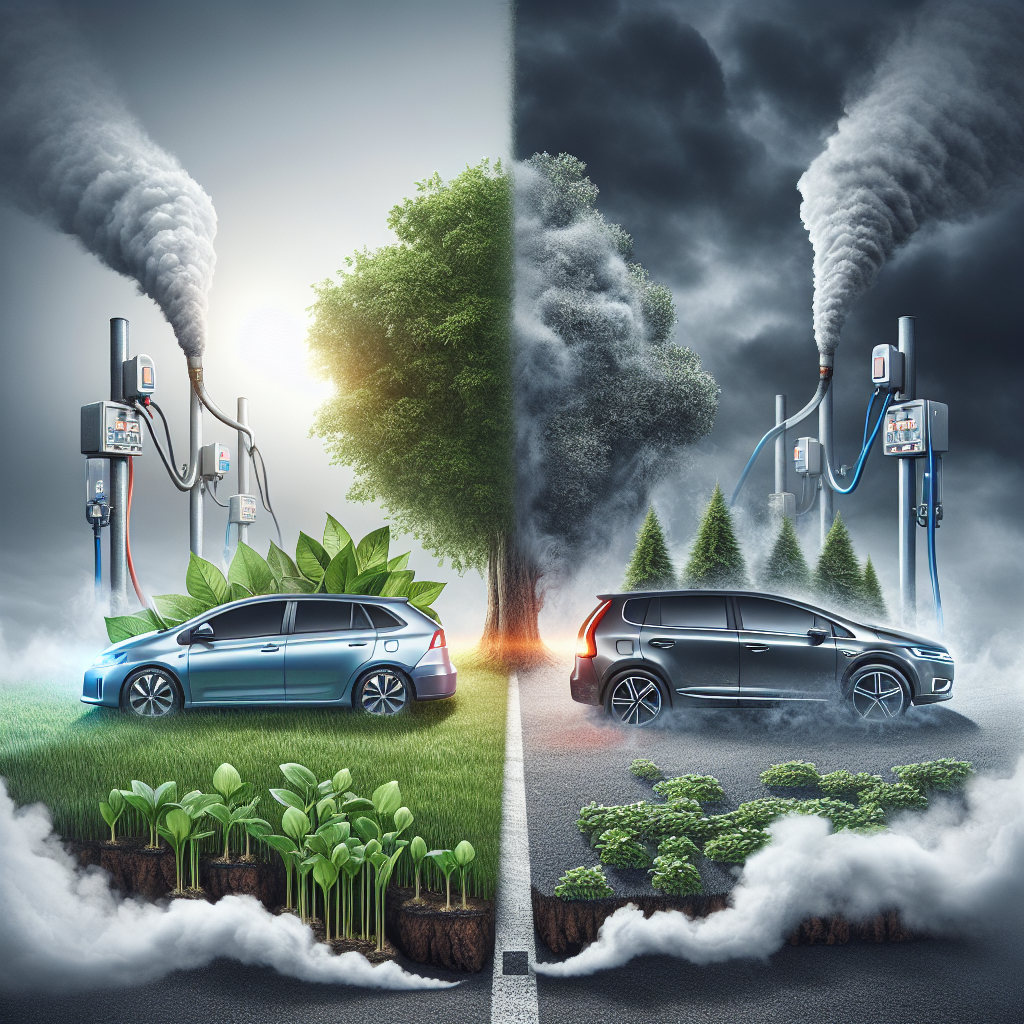The debate between traditional gasoline-powered cars and electric vehicles (EVs) is heating up as we journey further into the 21st century. One of the most pivotal aspects of this debate revolves around the carbon footprint associated with each type of vehicle. Understanding the environmental impact of traditional vs. electric cars is crucial for consumers, policymakers, and industry stakeholders as they make decisions that will shape the future of transportation and its effects on our planet.
Traditional Cars: The Carbon Legacy
Traditional cars, powered by internal combustion engines (ICEs), run on fossil fuels such as gasoline or diesel. The carbon footprint of these vehicles is significant, stemming from two primary sources: direct and indirect emissions. Direct emissions come from the tailpipe, releasing carbon dioxide (CO2), methane (CH4), and nitrous oxide (N20) into the atmosphere during fuel combustion. Indirect emissions are associated with the lifecycle of the fuel itself, including extraction, refining, transportation, and distribution.
A typical gasoline-powered car emits about 4.6 metric tons of CO2 per year, assuming an average annual driving distance of 11,500 miles and a fuel economy of about 25.4 miles per gallon. However, the total carbon footprint is larger when considering the entire lifecycle of the fuel.
Electric Cars: A Greener Alternative?
Electric vehicles (EVs) are hailed as a more sustainable alternative, primarily because they produce zero tailpipe emissions. However, their overall carbon footprint is more complex to assess, as it largely depends on the source of the electricity used to charge the batteries. In regions where the energy mix is heavily reliant on fossil fuels, such as coal or natural gas, the carbon footprint of driving an EV can be comparable to, or even exceed, that of a traditional car. Conversely, in areas where renewable energy sources like hydro, wind, or solar power dominate, EVs have a significantly lower carbon footprint.
Moreover, the production of EVs, particularly the batteries, is an energy-intensive process that involves significant CO2 emissions. Mining and processing the lithium, cobalt, and nickel required for battery cells contribute to the environmental impact. However, studies suggest that despite the higher emissions during production, the total lifecycle emissions of EVs are still substantially lower than those of traditional cars, thanks to the lower operational emissions.
A Comprehensive Analysis
To accurately compare the carbon footprint of traditional cars and EVs, one must consider the entire lifecycle of the vehicle, from production through to disposal. Lifecycle assessments (LCAs) provide a holistic view of the environmental impact, including carbon emissions, of both vehicle types.
Production:
- Traditional Cars: The production phase of traditional cars is less energy-intensive compared to EVs, primarily because it does not involve battery manufacture. However, this phase still contributes a significant amount of emissions.
- Electric Cars: The production of EVs, especially the batteries, requires more energy, resulting in higher initial CO2 emissions. Despite this, the total lifecycle emissions can be lower due to the absence of tailpipe emissions and the potential for using renewable energy for charging.
Operation:
- Traditional Cars: The operational phase is where traditional cars have the highest carbon footprint due to the continuous burning of fossil fuels, leading to significant direct and indirect CO2 emissions.
- Electric Cars: EVs shine in the operational phase, with zero tailpipe emissions and the potential for very low lifecycle emissions if charged with renewable energy.
End-of-Life:
- Both vehicle types involve emissions from disposal and recycling, though the impact is relatively small compared to the production and operation phases. The recycling of EV batteries is an area of growing interest and development, aiming to reduce the environmental impact further.
FAQs
Q: Are electric cars really better for the environment?
A: Yes, when considering the total lifecycle emissions, electric cars typically have a smaller carbon footprint than traditional cars, especially if the electricity used to charge them comes from renewable sources.
Q: How does the electricity source affect an EV’s carbon footprint?
A: The cleaner the energy source, the lower the carbon footprint of charging an EV. In regions where the grid is powered by renewables, EVs have a significantly lower environmental impact.
Q: Can the production emissions of EVs be reduced?
A: Yes, as technology advances and the adoption of renewable energy in manufacturing processes increases, the carbon footprint associated with producing EVs, especially the batteries, is expected to decrease.
Q: What happens to EV batteries at the end of their life?
A: EV batteries can be recycled or repurposed for other uses, such as energy storage systems. Research and investment in battery recycling technologies are increasing to make this process more efficient and less carbon-intensive.
Q: Is switching to an electric vehicle enough to combat climate change?
A: While switching to an electric vehicle can significantly reduce an individual’s carbon footprint, broader actions are needed to combat climate change effectively. This includes transitioning to renewable energy sources, enhancing energy efficiency across all sectors, and adopting sustainable practices in daily life.
In conclusion, electric vehicles offer a promising path towards reducing the transportation sector’s carbon footprint. However, to maximize the environmental benefits of EVs, it is crucial to continue advancing renewable energy technologies and improving the sustainability of vehicle production processes. As the world moves towards a greener future, the role of electric vehicles, supported by cleaner energy sources and more efficient manufacturing practices, will be pivotal in shaping a sustainable transportation ecosystem.

